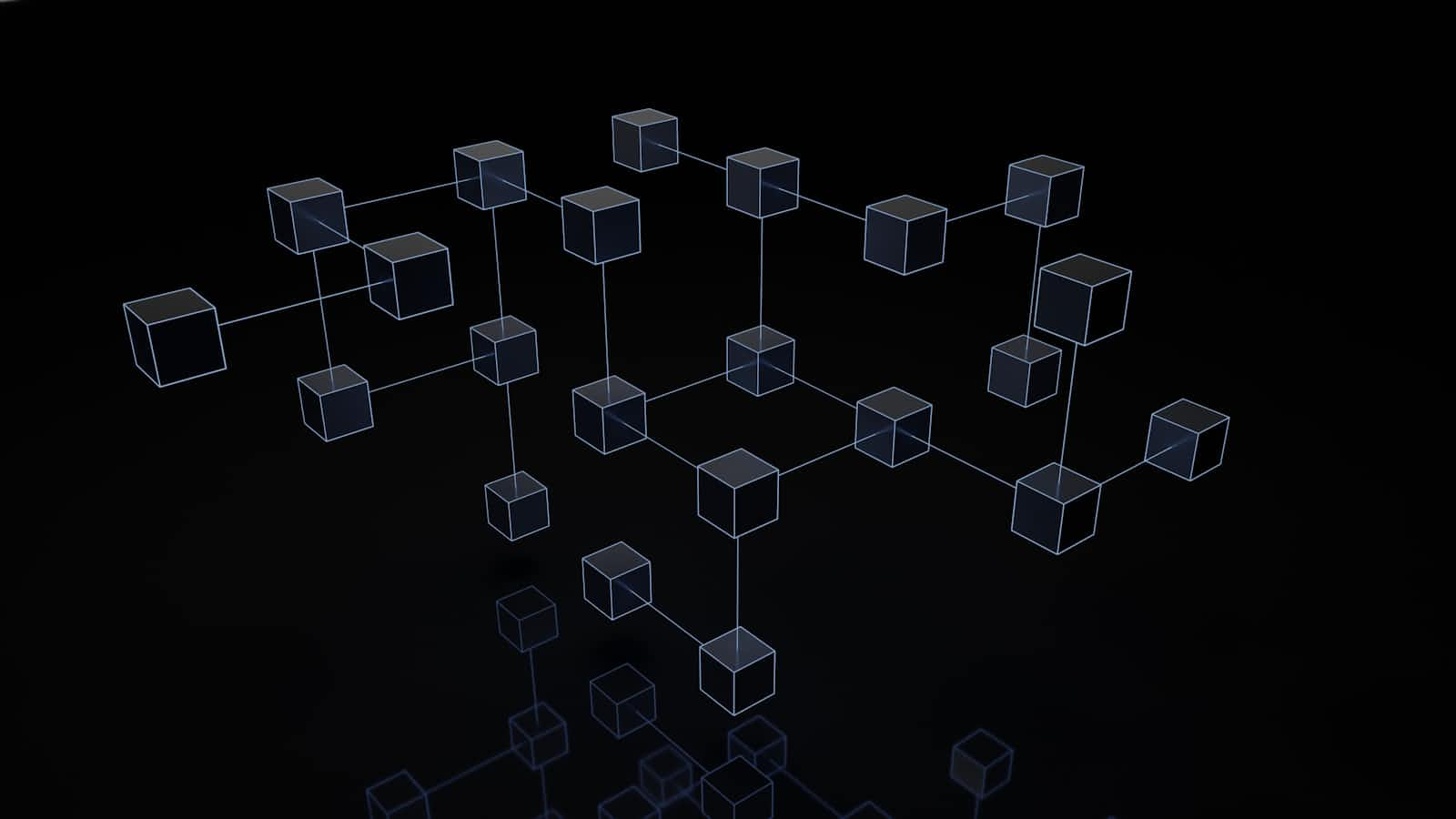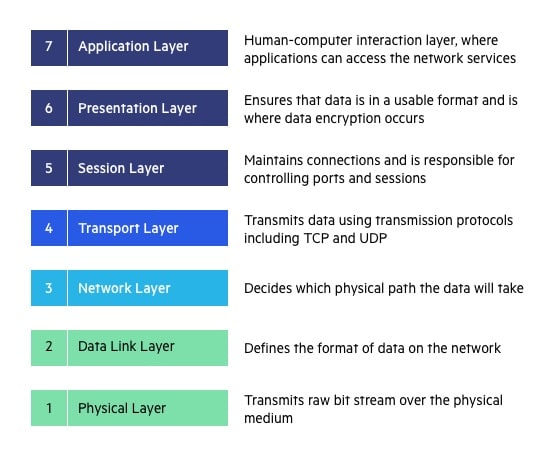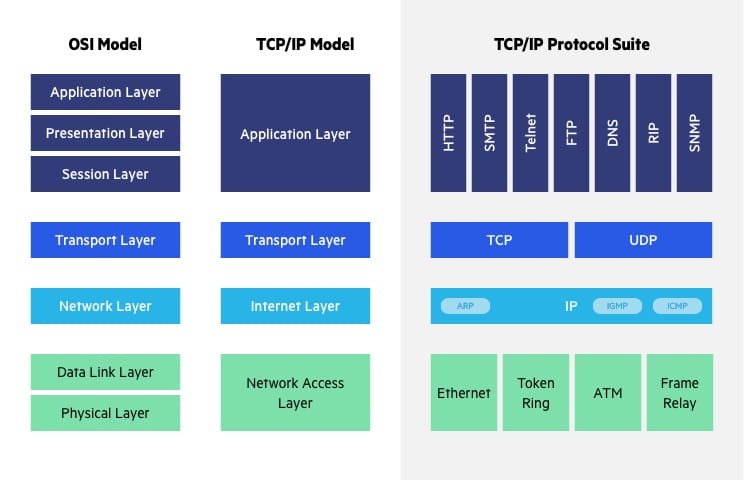OSI Modal
 Samarth Mishra
Samarth Mishra
What Is the OSI Model
The Open Systems Interconnection (OSI) model describes seven layers that computer systems use to communicate over a network. It was the first standard model for network communications, adopted by all major computer and telecommunication companies in the early 1980s
The modern Internet is not based on OSI, but on the simpler TCP/IP model. However, the OSI 7-layer model is still widely used, as it helps visualize and communicate how networks operate, and helps isolate and troubleshoot networking problems.
OSI was introduced in 1983 by representatives of the major computer and telecom companies, and was adopted by ISO as an international standard in 1984.
OSI Model Explained: The OSI 7 Layers
We’ll describe OSI layers “top down” from the application layer that directly serves the end user, down to the physical layer.
7. Application Layer
The application layer is used by end-user software such as web browsers and email clients. It provides protocols that allow software to send and receive information and present meaningful data to users. A few examples of application layer protocols are the Hypertext Transfer Protocol (HTTP), File Transfer Protocol (FTP), Post Office Protocol (POP), Simple Mail Transfer Protocol (SMTP), and Domain Name System (DNS).
6. Presentation Layer
The presentation layer prepares data for the application layer. It defines how two devices should encode, encrypt, and compress data so it is received correctly on the other end. The presentation layer takes any data transmitted by the application layer and prepares it for transmission over the session layer.
5. Session Layer
The session layer creates communication channels, called sessions, between devices. It is responsible for opening sessions, ensuring they remain open and functional while data is being transferred, and closing them when communication ends. The session layer can also set checkpoints during a data transfer—if the session is interrupted, devices can resume data transfer from the last checkpoint.
4. Transport Layer
The transport layer takes data transferred in the session layer and breaks it into “segments” on the transmitting end. It is responsible for reassembling the segments on the receiving end, turning it back into data that can be used by the session layer. The transport layer carries out flow control, sending data at a rate that matches the connection speed of the receiving device, and error control, checking if data was received incorrectly and if not, requesting it again.
3. Network Layer
The network layer has two main functions. One is breaking up segments into network packets, and reassembling the packets on the receiving end. The other is routing packets by discovering the best path across a physical network. The network layer uses network addresses (typically Internet Protocol addresses) to route packets to a destination node.
2. Data Link Layer
The data link layer establishes and terminates a connection between two physically-connected nodes on a network. It breaks up packets into frames and sends them from source to destination. This layer is composed of two parts—Logical Link Control (LLC), which identifies network protocols, performs error checking and synchronizes frames, and Media Access Control (MAC) which uses MAC addresses to connect devices and define permissions to transmit and receive data.
1. Physical Layer
The physical layer is responsible for the physical cable or wireless connection between network nodes. It defines the connector, the electrical cable or wireless technology connecting the devices, and is responsible for transmission of the raw data, which is simply a series of 0s and 1s, while taking care of bit rate control.
Advantages of OSI Model
The OSI model helps users and operators of computer networks:
Determine the required hardware and software to build their network.
Understand and communicate the process followed by components communicating across a network.
Perform troubleshooting, by identifying which network layer is causing an issue and focusing efforts on that layer.
The OSI model helps network device manufacturers and networking software vendors:
Create devices and software that can communicate with products from any other vendor, allowing open interoperability
Define which parts of the network their products should work with.
Communicate to users at which network layers their product operates – for example, only at the application layer, or across the stack.
OSI vs. TCP/IP Model
The Transfer Control Protocol/Internet Protocol (TCP/IP) is older than the OSI model and was created by the US Department of Defense (DoD). A key difference between the models is that TCP/IP is simpler, collapsing several OSI layers into one:
OSI layers 5, 6, 7 are combined into one Application Layer in TCP/IP
OSI layers 1, 2 are combined into one Network Access Layer in TCP/IP – however TCP/IP does not take responsibility for sequencing and acknowledgement functions, leaving these to the underlying transport layer.
Other important differences:
TCP/IP is a functional model designed to solve specific communication problems, and which is based on specific, standard protocols. OSI is a generic, protocol-independent model intended to describe all forms of network communication.
In TCP/IP, most applications use all the layers, while in OSI simple applications do not use all seven layers. Only layers 1, 2 and 3 are mandatory to enable any data communication.
See how Imperva Web Application Firewall can help you with application security.
Request demoLearn more
Imperva Application Security
Imperva security solutions secure your applications across multiple layers of the OSI model, from the network layer, protected by Imperva DDoS mitigation, to Imperva’s web application firewall (WAF), bot management and API security technology that safeguards the application layer.
To secure applications and networks across the OSI stack, Imperva provides multi-layered protection to make sure websites and applications are available, easily accessible and safe. The Imperva application security solution includes:
DDoS Protection—maintain uptime in all situations. Prevent any type of DDoS attack, of any size, from preventing access to your website and network infrastructure.
CDN—enhance website performance and reduce bandwidth costs with a CDN designed for developers. Cache static resources at the edge while accelerating APIs and dynamic websites.
WAF—cloud-based solution permits legitimate traffic and prevents bad traffic, safeguarding applications at the edge. Gateway WAF keeps applications and APIs inside your network safe.
Bot protection—analyzes your bot traffic to pinpoint anomalies, identifies bad bot behavior and validates it via challenge mechanisms that do not impact user traffic.
API security—protects APIs by ensuring only desired traffic can access your API endpoint, as well as detecting and blocking exploits of vulnerabilities.
Account takeover protection—uses an intent-based detection process to identify and defends against attempts to take over users’ accounts for malicious purposes.
RASP—keep your applications safe from within against known and zero‑day attacks. Fast and accurate protection with no signature or learning mode.
Attack analytics—mitigate and respond to real cyber security threats efficiently and accurately with actionable intelligence across all your layers of defense.
Subscribe to my newsletter
Read articles from Samarth Mishra directly inside your inbox. Subscribe to the newsletter, and don't miss out.
Written by

Samarth Mishra
Samarth Mishra
I'm a passionate and versatile professional with 3+ years of hands-on experience in cybersecurity, software engineering, and web development. Samarth has dual degrees in Bachelor of Computer Applications (BCA) and Bachelor of Business Administration (BBA) from Allenhouse Group of Colleges and IGNOU, showcasing a unique blend of technical expertise and business acumen. Certified as a Cisco Certified Network Associate (CCNA) and Certified Information Systems Security Professional (CISSP), I specialise in security architecture and risk management, with proficiency in tools like Flutter, React.js, Node.js, and Firebase.

